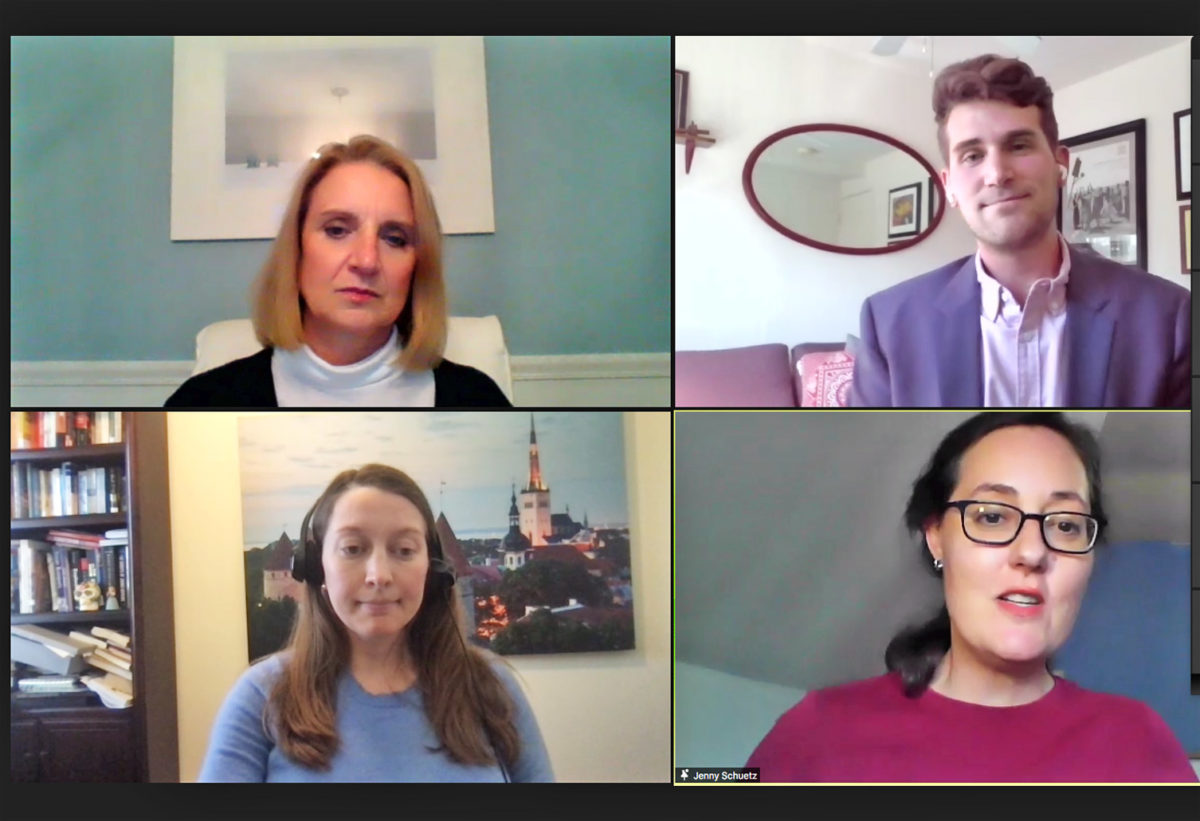“Mr. President, have pity on the working man,” Randy Newman once sang.
It”™s a refrain that has been taken up by all kinds of small businesses during the pandemic, none more so than the restaurant industry. According to the National Restaurant Association, industry sales totaled $659 billion in 2020, with 12.5 million employees.
Impressive numbers on their face, but the association notes that, pre-Covid, those numbers were respectively expected to be nearly $900 billion and 15.6 million. It estimates that 110,000 restaurants temporarily or permanently closed last year.
Scott Dolch, executive director of the Connecticut Restaurant Association (CRA), estimates that 600 have closed either temporarily or permanently since the pandemic began, but noted that more financial help is on the way.
 The recently passed American Rescue Plan Act created a $28.6 billion Restaurant Revitalization Fund to provide grants for restaurants sustaining financial losses during the pandemic. In other words, Dolch said, the government is taking pity on the working man.
The recently passed American Rescue Plan Act created a $28.6 billion Restaurant Revitalization Fund to provide grants for restaurants sustaining financial losses during the pandemic. In other words, Dolch said, the government is taking pity on the working man.
Even so, he told the Business Journal, “I”™m not sold that it”™s going to be the lifesaver that some think. I hope it is.”
The restaurant grants follow two rounds of Paycheck Protection Program (PPP) grants that many Connecticut restaurants were able to take advantage of. Although the U.S. Small Business Administration (SBA), which administers the loans, does not break recipients out by both sector and state, it said that as of April 14, nearly $3 trillion in PPP loans had been distributed to 45,034 Connecticut businesses.
Stung by criticism over how the first round of the PPP program was rolled out ”” amid lots of confusion, basically ”” the Restaurant Revitalization Fund website went up on April 17 and includes a sample application and program guide.
However, applications are not yet being received. The organization has not said when that will begin, but has indicated it will be in the short term.
“We”™re focused on ensuring that the RRF program”™s application process is streamlined and free of burdensome, bureaucratic hurdles ”” while still maintaining robust oversight,” SBA Administrator Isabella Casillas Guzman said in a statement.
“There are still a lot of unknowns,” Dolch said. “We”™ve heard that the applications process could be open as early as the end of this month. But there”™s going to be up to maybe 1 million applications.”
One of those applicants will be Christian Burns, principal of the Skal Restaurant Group, which includes Cask Republics in Stamford and Norwalk, and The Ginger Man in Greenwich.
“We”™re most definitely applying for it,” Burns said. “We received our PPP funding, and hopefully this process will go smoothly. We”™re excited, because it can, and will, be helpful to us.”
Burns is also hoping for passage of Connecticut House Bill 6673, under which restaurants and caterers would continue to collect the 7.35% tax on meals and beverages but would only need to send 6.35% on to the state between July 1, 2021 to June 30, 2022.
“We”™re grateful that the state is even considering something like that,” he said.
“It”™s a great bill that will help our industry recover,” Dolch agreed. “It was actually an idea that we had about 4½ months before the pandemic hit, but it never really went anywhere. Now we”™re talking with the governor, legislators and the DECD about it pretty seriously.”
Dolch said that most people are unaware that a typical full-service restaurant in the U.S. usually records about $2 million a year in sales, but operates at a 4% to 6% profit margin.
He further noted that many restaurants that were allowed to defer their rent payments during the height of the pandemic are now finding those bills coming due. “Something like (HB 6673), along with the RFF, can really help,” he said.
The other big challenge
With outdoor dining once again a reality, an ever-increasing amount of residents getting vaccinated and monetary relief on the way, restaurants are now facing the unusual challenge of finding workers.
“For the last two or three weeks, it”™s been a constant refrain ”” how do you get staff,” Dolch said.
According to the CRA”™s latest data, about 98,000 employees are back to working in the hospitality sector ”” something that usually employs around 150,000.
“We were at around 127,000 in early October, when the weather started to turn,” he said.
The lack of staff can be attributed to several factors, including people finding other lines of work, fears that returning to a restaurant setting could compromise one”™s safety and that one can earn more on unemployment. But Dolch believes something else is afoot.
“Every single restaurant I”™ve talked to says they”™re seeing consumer confidence coming back up,” he said. “The problem is that everybody”™s saying at the same time, ”˜Come work with us, we”™re hiring!”™ People are looking to hire tens of thousands of employees across the state at the same time.”
“We”™re getting fewer resume traffic now, for sure,” Burns said. “It”™s more difficult to find people. It”™s like the time has passed where you can just place an ad and have a lot of people coming in.”
Meanwhile, on April 19, Gov. Ned Lamont announced the state would further relax its Covid restrictions on restaurants. Beginning May 1, the 11 p.m. curfew will be moved to midnight and on May 19, Connecticut will lift all pandemic-related restrictions on restaurants except the need to wear a mask indoors when not dining.
All remaining business restrictions will also be lifted the same day, except for the wearing of masks indoors.
For all of the positive signs out there, Dolch said he remains convinced that the sector won”™t be back to “normal” until “the latter half of this year or even 2022.
“I want to get the industry back on its feet more quickly than anyone else,” he said. “Right now, everybody”™s like, ”˜Hey, we”™ve had a couple of great days!”™ That doesn”™t make up for 13 months”™ worth of loss.”























